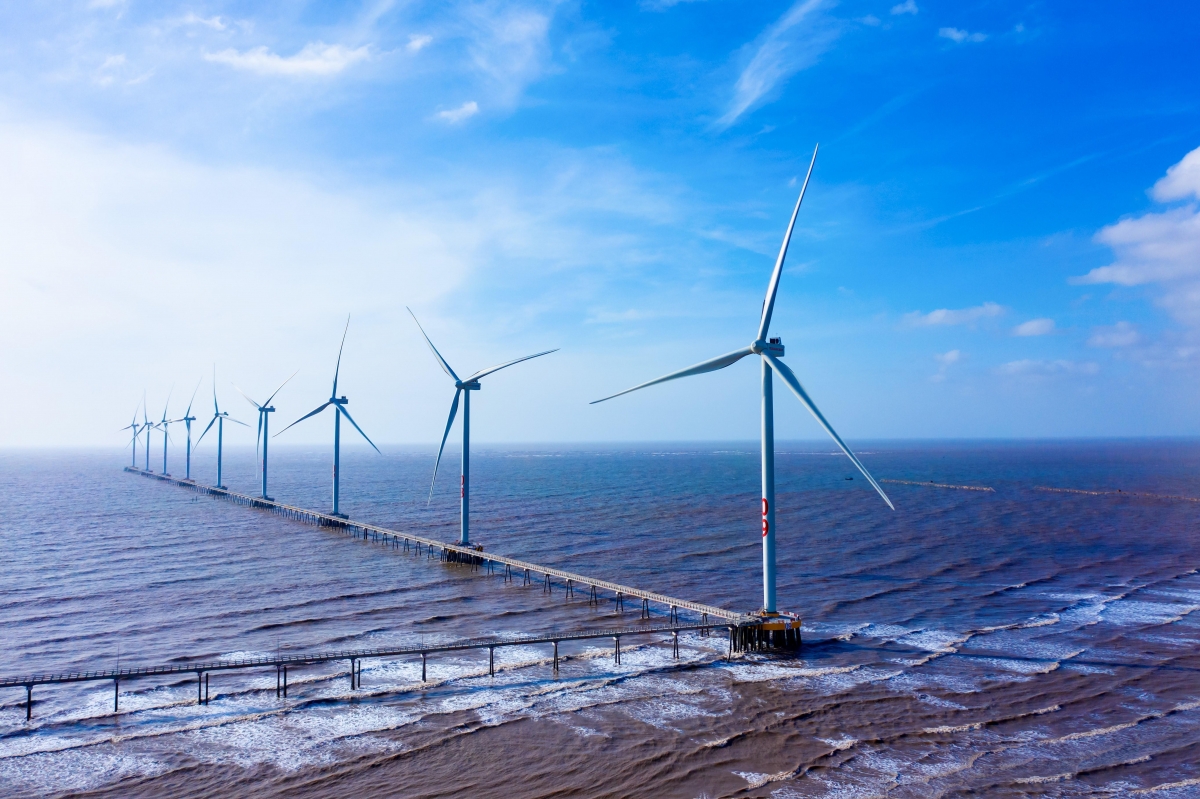Energy localisation rate remains below expectations
Despite encouraging progress, Vietnam’s localisation rate in energy and supporting industries remains below expectations and regional peers, according to policymakers and industry insiders.
Chu Viet Cuong, director of the Industrial Development Support Centre under the Ministry of Industry and Trade, said the localisation rate of energy projects — particularly in wind, solar, hydropower and thermal power — has improved in recent years, but still lags behind Government targets, VnEconomy reports.
In the wind power sector, Vietnam has achieved only around 25–30% localisation, mostly in foundations, steel structures, piles, turbine towers and connection systems. A few domestic enterprises, such as CS Wind, TOMECO, Lilama and Dong Anh Electrical Equipment have been able to produce and supply internationally certified components.
Solar energy has a higher localisation rate of 35–40%, mainly in supporting structures, cables, electrical cabinets, inverters and partial PV module assembly. Vietnam is now among the top 10 global producers of solar panels, with companies like Boviet Solar, IREX Solar and Vina Solar active in manufacturing. However, the upstream semiconductor, wafer and cell value chains still rely heavily on imports.
In electrical equipment, transmission and storage, several mechanical and electrical companies have mastered core technologies and invested in modern lines to increase domestic content. A Chau Group designs and manufactures switchboards, PCB and PCBA components, while Vina Electric has successfully produced silicon-based insulators to replace Chinese imports.
Despite these achievements, Vietnam’s overall localisation rate remains well below Thailand’s 60–65% and Malaysia’s 55–60% in renewable energy. Experts see this as evidence that Vietnam’s progress, while notable, still lacks scale, depth and long-term sustainability.
Challenges
Deputy Director of the Institute of Mechanical Research Dr Vu Van Khoa said three structural bottlenecks continue to hinder the development of energy-related supporting industries.
First, the market scale remains small. Large hydropower projects above 30MW are now rare, and most current activities involve expansions like at Hoa Binh, Hoi Quang and Thac Ba.
Only a few new pumped-storage projects, including Bac Ai, Hoa Phuoc, Phu Yen and Don Duong, are under way. Thermal power has only three or four remaining projects, such as Quang Tri 1, Song Hau 2 and Nam Dinh, each facing its own delays.
Meanwhile, renewable energy — including solar, hydrogen and wind — is constrained by unstable pricing, shifting currency conversion rules and long turbine delivery times.
Offshore wind, one of the most promising areas, is still at an early stage, with PTSC, a subsidiary of PVN, conducting initial surveys. High upfront investment costs continue to limit domestic participation.
Second, enterprise capacity remains weak. Most Vietnamese manufacturers are small or medium-sized, with limited financial strength, outdated technology and a modest workforce.
The country still lacks a sufficiently large materials industry, meaning most input materials must be imported. This leads to price volatility and dependence on foreign suppliers.
In addition, few companies have in-house laboratories that meet international testing standards, preventing them from joining global supply chains.
Third, the conservative practices of engineering, procurement and construction (EPC) contractors create systemic barriers. Investors often prefer international tenders for safety and financing advantages, which leads to foreign EPC firms dominating large energy projects.
Vietnamese companies are usually subcontractors at lower tiers, limiting their opportunities for technology transfer or credit access.
To overcome these limitations, experts have been calling for a stronger policy framework to accelerate localisation. Dr Khoa recommends a mandatory localisation roadmap for each sub-sector, with clear targets and timeframes that allow domestic enterprises to adapt and scale up.
He also suggests that localisation requirements align with actual enterprise capacity, ensuring feasibility and absorption.
The Ministry of Industry and Trade has been urged to promote worker development, technological partnerships and financing incentives to help domestic firms upgrade and expand.
Encouraging joint ventures with international manufacturers and improving standards certification systems are also considered essential for deepening Vietnam’s participation in global energy supply chains.




